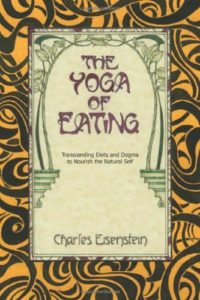Climate — A New Story
Chapters
Chapter10: Money and Debt
The Growth Imperative
There is one key dissimilarity between Musical Chairs and the money system, although this difference does not alter the fundamental pressures that generate anxiety and competition. The dissimilarity is called “economic growth.” For illustration, imagine a simplified economy in which the banking system has lent a million dollars at 7 percent interest out to a thousand people. Each person has received $1,000 and after ten years’ time must pay back $2,000. It is mathematically impossible for more than half of them to do it, because only $1 million has been created in the first place, but $2 million is owed. If that were all to the story, a ferocious competition would ensue in which at least half of the people would go bankrupt, just like the Musical Chairs game.
In fact, when the initial loans of $1,000 each come due, nearly everyone can pay them back. Why? Because in the interim, the bank has lent that additional $1,000 per person into existence—another $1 million in total debt. (The money isn’t lent out evenly, though. It goes only to those who the bank thinks will pay it back with interest.) As long as new money is continually created (lent into existence), the system can keep running. When lending slows down—or even fails to grow at the pace of the rate of interest—then bankruptcies are inevitable. A vicious circle looms: layoffs and pay cuts, leading to falling demand and falling prices, leading to falling profits, leading to fewer lending opportunities, leading to more bankruptcies and layoffs. This is called a depression.
To forestall depression, economic growth must never end. It is no accident that, because they take the current system as unchangeable, politicians left, right, and center all champion economic growth. They disagree about how to accomplish it, but everyone agrees that it is necessary. They are right—under the present financial system, it is necessary.
Economic growth is rarely questioned by any politician, since its premises are so deeply entrenched. That is why the progressive left conjures fantasies of “sustainable growth,” imagining that somehow we can continue to replace relationships with services and nature with products without ecological or social depletion.
Numerous economists are arguing—not only for ecological reasons—that we are nearing the limits of economic growth.[1] Unfortunately, our present money system works only in the context of rapid growth, essentially because positive returns on capital investment are necessary systemwide in order to motivate sufficient lending. Lending, in turn, is the basis of money creation. Without new money constantly being created, the means to service the debts is diminished, resulting in bankruptcies, unemployment, concentration of wealth, and the need for austerity to temporarily service the debts when rising income cannot. This generates relentless pressure on governments to find new ways to facilitate economic growth: colonialism, exploitation of natural resources, and so on. Today we face limits to growth, leaving austerity as the only option to keep the debtors paying a while longer.
Economic growth means the growth in goods and services exchanged for money. Therefore, a remote village in India or a traditional tribal area in Brazil presents a big growth opportunity, because the people there barely pay for anything. They grow or forage their own food. They build their own houses. They use traditional healing methods to treat their sick. They make their own music and drama. Imagine the development expert goes there and says, “What a tremendous market opportunity! These backward people grow their own food—they could buy it instead. They cook their own food too—restaurants and supermarket delis could do it for them much more efficiently. The air is full of song—they could buy entertainment instead. The children play with each other for free—they could enroll in day care. They accompany adults learning traditional skills—this society could pay for schooling. When a house burns down, the community gets together to rebuild it—if we can unravel those ties of mutual aid, there’s a big market for insurance. Everyone has a strong sense of social identity, a strong sense of belonging—they could buy brand name products instead. Everyone is joyful and content—they could be buying a semblance of that through legal and illegal drugs and other forms of consumption.”
Okay, I’m getting a bit dizzy with visions of riches, but you get the idea. The question is: how are these people going to pay for all that? Easy. They earn money by converting local natural resources and their own labor into commodities. The rainforest becomes a palm oil plantation. The mountain becomes a strip mine. The river becomes a hydroelectric plant. The population abandons their traditional ways and goes to work in the money economy. A few become doctors, lawyers, and engineers. The rest migrate to the slums.
In a nutshell, this is the process called “development.” It is what development loans have funded for more than half a century. It accompanies an ideology that says that money equates with well-being, that development along the model of the West is a good thing (or an inevitable thing), that a high-tech life is superior to a life close to nature. These assumptions are difficult to refute using logical arguments. Usually, shedding them requires spending time in less developed cultures, witnessing the joy and depth of aliveness there, and seeing their beauty erode as they modernize.
The word “development” contains a value judgment that others are less advanced along an implicit scale of progress. Accordingly, a financial system that compels development is a good thing. And it looks like a good thing indeed if one accepts GDP as a valid measure of well-being. When tens of millions of Indian farmers switched from biodiverse organic agriculture for local consumption to the chemical-intensive, water-intensive monoculture production of crops for commodities markets, their contribution to measured GDP rose markedly. Why? Before commoditization, much of the food was eaten by the extended family that grew it, and circulated through the community through nonmonetary systems of reciprocity. The rest was sold in local markets in an informal economy. Transitioning to chemicalized, mechanized agriculture involved going into debt to buy machinery, fertilizer, herbicides, insecticides, and seeds. The resulting suffering that happened when commodity prices fell and farmers couldn’t make debt payments is well known: banks foreclosed on land that had been in families for centuries, even millennia, and hundreds of thousands of farmers committed suicide. The younger generation had no choice but to move to the burgeoning megacities as traditional livelihoods evaporated. Industrial products replaced the output of potters, toolmakers, weavers, and other artisans. And GDP figures rose.
Usually, blame for this state of affairs is placed on Monsanto and the banks, invoking the bugbear of corporate greed. It is sure nice to have something to hate and to blame, and it is true that Monsanto aggressively pushed its chemicals and GMO seeds in India. We must understand though that this corporation swims in the ideological waters of “modernization” and believes itself to be rendering a great service to humanity. Yields have gone up and the economy is growing. We are helping backward peasants enter the modern age and feed the world’s hungry masses. As usual, the problem with these justifying numbers lies in what isn’t measured, such as:
- Social disruption caused by abrupt changes in local economic patterns
- Lost subsistence food crops that never entered harvest tallies
- Dietary diversity, which is important to good health
- Future losses due to falling water tables due to water-hungry monocultures
- Future losses due to soil erosion caused by modern agricultural processes
- Contamination of soil and water by chemicals
- Losses stemming from long-term soil compaction and loss of mycelia
- Future effects of superweeds and insecticide-resistant insects
As is so often the case, what is most important is what the numbers leave out. The story of modernization that Monsanto inhabits depends on the invisibility of these things. That same invisibility is what keeps natural human compassion from operating, as suffering hides behind the numbers. It isn’t just Monsanto of course; the mindset of development is intrinsic to the system we live in. It is part of the Story of Separation with its thread of humanity ascending to lordship over nature. We might even admire Monsanto for being an especially innovative practitioner of a near-universal ideology. To blame Monsanto’s greed (or that of its brethren like Syngenta, DuPont, Dow, Bayer, etc.) is to misdiagnose the problem, or at best, to attack the symptom rather than the conditions of the disease. The conditions are the story and the system. From within that, those working for Monsanto see themselves as the good guys and the anti-Monsanto marchers as delusional hippies who just don’t get it. They just don’t understand that thousands of dedicated scientists—scientists!—have devoted their careers to advances in crop science that are bringing such benefits to the world. They don’t understand that we are in a race against hunger.
Understanding the system and the story that Monsanto etc. operates in, we can direct our activism toward changing the system and rewriting the story. Even on those occasions where a fight is necessary, we will be much more effective acting from a full realization of how the opponent sees the world and itself.
System and story are deeply entwined. In case the ideology of modernization and development isn’t enough, there is intense financial pressure to conform to it. In the banking analogy above, the new $1,000 isn’t lent randomly to just anyone. It is lent to those who are deemed likely to be able to pay it back with interest—by earning money from someone else in the circle. Money originates as credit to those who will pay it back with interest, ultimately from participating in the creation of new goods and services. That means the conversion of social relationships into services, and natural wealth into products. That is called development.
End Notes
[1] For a case that the age of economic growth is over that does not rely on ecological arguments, see Gordon (2012).






